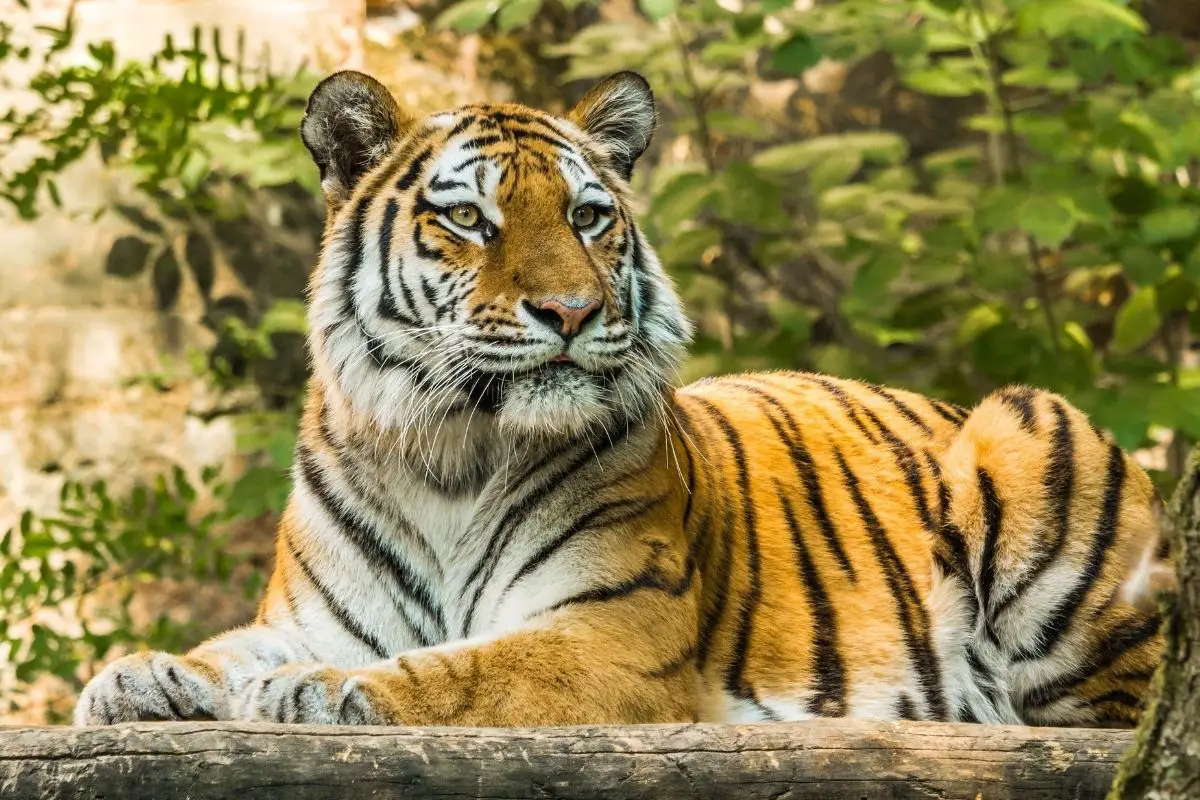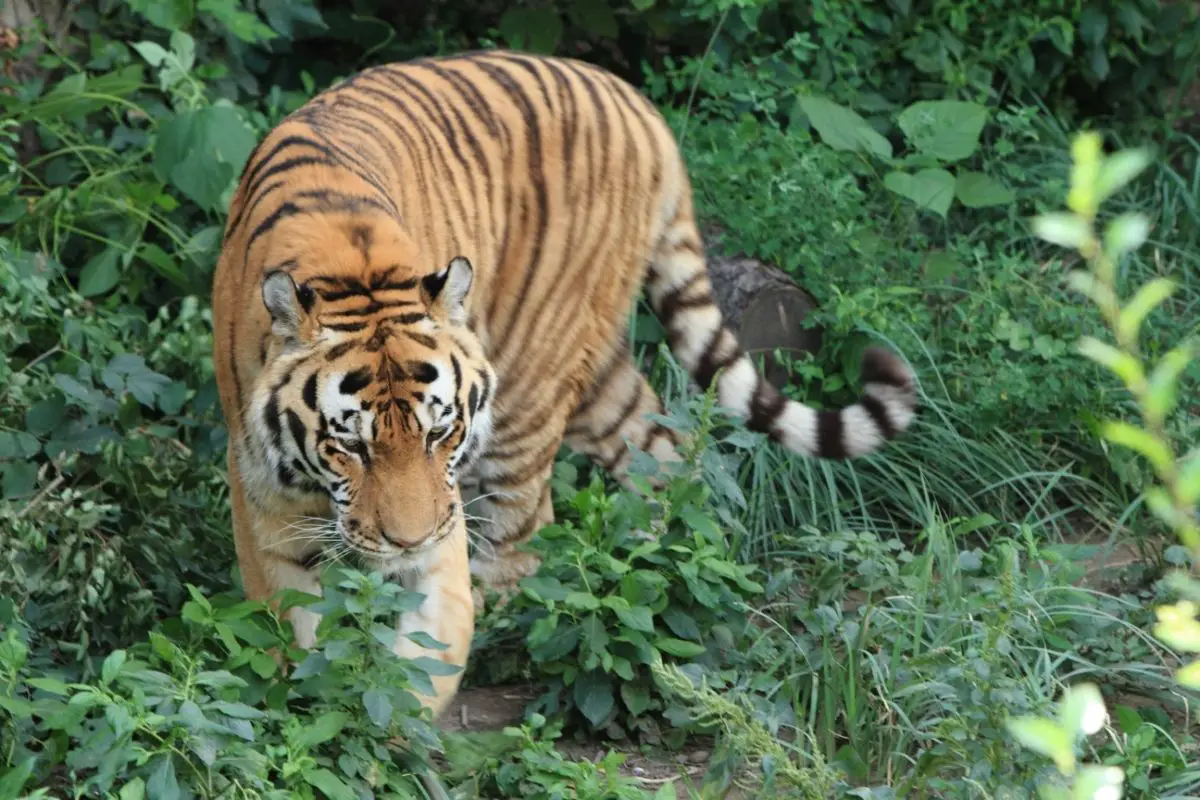Over 12,000 years ago an almost cataclysmic event occurred that could have wiped out the entire tiger population, only a few species survived and the Capsian tiger was one of these species.
The scientific name of this subspecies was panthera tigris virgata. There is not a lot known in modern times about this animal but this guide will teach you everything that you should know about this creature that once roamed the earth freely.

Caspian Tigers
This large tiger species was once native to areas across Turkey, Iran, Central Asia, and Western China. It also had habitats in northern Afghanistan and the Caucasus around the Caspian Sea, which is where this species’ name came from.
The Caspian tigers favored areas that were lowland forest areas as vegetation cover was an essential part of the Caspian tigers hunting methods.
They lived off small prey such as deer species and wild boar but as their habitats became more domesticated they would eat livestock, domestic cats, and dogs.
Caspian tigers typically lived up to ten years. Their life span was influenced by the readiness of food in their habitat and the habitat itself.
Usually, Caspian tigers would be spotted alone as they were not very social creatures and tended to live a life of solitary.
If Caspian tigers still roamed today they would be slightly smaller than the Siberian tiger. Caspian tigers have extremely large paws and have similar fur characteristics to the Siberian and Bengal tigers.
The fur was a golden-yellow color and skinny stripes ran the length of the body. These stripes were brownish-red to dark brown.
This species weighed up to 500 pounds and could measure up to 8 feet in length, including the tail. In the winter months, the fur of the tiger would become paler and become longer.
When this coat was shed in the warmer months the bright golden-yellow hue of this creature’s fur would return again.
Differences Between Caspian Tiger And Other Tiger Species
When looking at both extinct and currently existing tiger species there are a number of differences that can be seen. These differences are often slight variations in the common appearance of tigers.
Caspian tigers differ from other tiger species mostly because the paws of the Caspian tiger were much larger than other tiger species and so tracks could easily be identified making the Caspian tiger an easy target for poachers and illegal hunters.
The Caspian tiger also had unusually large claws.
The markings on the Caspian tiger’s tail also differed from the precise markings you can see on other species in that they were less distinct.
The coloring and patterns on the fur differ between most tiger subspecies, some are deeper and brighter shades of orange and yellows and the stripes can range in how thick or thin they are.
Caspian tigers also differ from other species in the type of winter coat they would grow for the cooler months. The coloring of the Caspian tiger’s fur would become paler so that it would camouflage more with its surroundings.
Most other tiger species develop a thicker winter coat but there is not a huge change in the coloring of the winter coat.
Caspian Tigers And Extinction
In 2003 the International Union for the Conservation of Nature declared the Caspian tiger extinct but it is believed that the species was extinct for decades prior to this declaration.
This group watches the species of the world closely and updates a red list early with species that are considered critically endangered. There are over 142,500 species currently on this list, with more added constantly.
While Caspian tigers do not exist today they have similarities to the Bengal and Siberian tiger species and would have fallen in between these species in terms of size. The memory of the Caspian tigers lives through these fellow large tiger species.
It is reported that the last Caspian tiger to die in captivity was shot dead in Turkey in the 1970s.
At one point in history, there were thousands of Caspian tigers held captive for profit. Some people would have kept these tigers as pets, held captive in cages as a way of showing their monetary status or status within society.
Reasons For Caspian Tigers Becoming Extinct

When animals become extinct we often find ourselves asking why? Caspian tigers fell victim to extinction due to deliberate hunting by the military in certain regions they inhabited and also as a result of the destruction of their habitat.
One of the main reasons for the habitats of the Caspian tiger being ruined was the colonization of Russia which led to more areas becoming populated.
Near the end of the 19th century, the Russian government voted that all tigers should be exterminated to enable people to move to the newly formed colonies without having to worry about the threat of local tiger species.
In 1947 this order was revoked but this was done at too late a stage to benefit the population of the Caspian tiger.
The hunting of Caspian tigers was also encouraged in other countries that wished to follow the same path as Russia. Hunting was used as an exercise for soldiers enabling them to get used to using guns and looking for targets.
Humans only have themselves to blame for the extinction of this species. If the habitats and creatures had been left alone they would still be thriving today, with the only exception of damage being done to habitats as a result of global warming.
Why Scientists Want To Bring Back Caspian Tigers
In recent years there has been a lot of discussion around scientists claiming they would like to bring back the Caspian tigers.
Scientists at the University of Oxford in the United Kingdom found through studying DNA samples obtained from Caspian tigers that this subspecies is closely related to the Siberian tiger.
From these findings, it has been suggested that a new subspecies could be created to try and replicate the Caspian tiger using DNA from the extinct giant and mixing it with the currently existing Siberian tiger as it is the most similar.
There are no reports as to whether or not this experiment will go ahead and whether it will involve the insemination of a Siberian tiger in captivity or how it will be done. However, there is other similar work going on in other countries.
Iran and Russia, who both have had a huge role in the extinction of the Caspian tiger, believe that because of the similarities and close relation between Caspian tigers and Siberian tigers that by simply introducing a small population of the Siberian species to the once native habitats of the Caspian tiger that through evolution and reproduction that this species could become Caspian tigers again.
It is believed that the Siberian tiger would grow larger paws and longer claws to adapt to its new environment, becoming more like a Caspian tiger than a Siberian tiger.
This project has been announced by government bodies but results or updates have not been issued since.
Can Caspian Tigers Be Brought Back?
The answer to this question is no, unfortunately bringing back extinct animals is impossible but there are certain things that scientists can do so that they can continue to learn from these extinct species.
Unfounded claims have said that Caspian tigers are still roaming around parts of Afghanistan but there is no clear evidence to support such claims.
Teams of researchers and animal conversationalists working in the wild often keep an eye out for potential sightings of animals that are believed to be extinct and there has been no officially logged sighting since this species was declared extinct.
It is through the hard work of scientists that we can learn more about animals that have been and that could be.
As the world continues to change we lose more and more species of animals each year and tigers as a whole are in danger of being extinct before the next century. A huge number of subspecies of tigers are already critically endangered.
It is important that we play our part to protect our planet and also try to help preserve the natural habitats that tigers currently exist in to try and prevent species, such as the Siberian tiger, from following in the footsteps of the Caspian tiger.
Supporting conservation groups can be a great way of helping these animals but it is important to do your research before donating or offering help as unfortunately not every group is as above board as others.
Final Thoughts
We hope this guide has given you more knowledge about the now extinct Caspian tiger. This species truly was a special part of the big cat kingdom with its large paws and differing appearance.
Through science, we may get to see aspects of this species in the flesh again but that remains to be seen. For now, we can take comfort in the fact that the story of this extinct species continues to live on.
- Sink Your Teeth Into This: Analyzing the Powerful Lion Bite Force - September 8, 2023
- Siberian Tigers: Everything You Need To Know - September 4, 2023
- Do Lions Eat Humans? Understanding Lion Aggression and Risks - September 4, 2023








